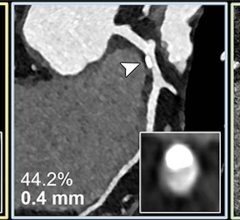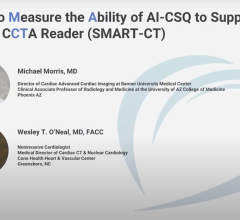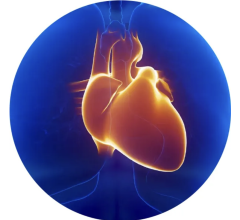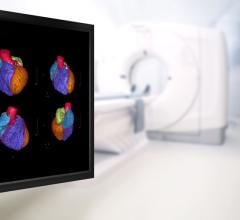
The Wisconsin Heart Hospital in Wauwatosa, WI.
There’s not much about The Wisconsin Heart Hospital (TWHH) that isn’t on the cutting edge of cardiovascular technology, including the way it operates.
The 60-bed Wauwatosa, WI-based hospital was founded as a partnership between cardiovascular, vascular and specialty physicians to offer a patient and family-centered experience. Its design allows patients to remain in the same private room throughout their stay, rather than being moved from surgical intensive care to a telemetry unit to a medical surgery unit.
TWHH’s techniques and studies aren’t lagging behind the curve, either. Recently, one of its surgeons was the first in the U.S. to use a brand new device to attach a blood vessel graft during coronary artery bypass surgery, and the hospital’s looking forward to participating in a trial that will investigate the use of CT angiography in the ER to screen low-to-intermediate-risk patients.
The hospital has also earned five national awards from Professional Research Consultant (PRC) for quality and service. Since its opening, it has consistently achieved “door-to-balloon time” — the time it takes for a heart attack patient to have emergency angioplasty — of less than 60 minutes, compared to 90 minutes. which is the recommended standard for hospitals.
Bringing in the Old
It may come as a surprise that TWHH is investigating a new device from Philips Medical Systems that takes a step backward in CT technology, according to Sam Wann, M.D., clinical professor of Medicine at the University of Wisconsin and chairman of the Department of Cardiovascular Medicine at TWHH.
Dr. Wann has been investigating the new Philips Step & Shoot Cardiac, a component of the Philips Brilliance CT 64-channel scanner. TWHH recently reported that the Step & Shoot feature delivers an 80 percent radiation dose reduction when compared to standard CT techniques.
“One of our concerns about coronary CT is radiation safety,” Dr. Wann said. “We like to have the radiation dose as low as possible.”
Most of today’s CT imaging involves helical, or spiral, acquisitions that perform retrospective cardiac gating and prospective data acquisitions. The Step & Shoot’s technique revolves around a nonhelical method.
“You can’t get the entire heart in one revolution of the detector, so we take one shot, then move the table down an increment and take another shot, and move it down and take another shot — in about four shots, we cover the entire heart,” Dr. Wann said.
By gating the EKG, the four shots are put back together and the physician has a full picture of the heart without the high radiation doses that come with helical acquisitions, he said.
Dr. Wann estimates that the average radiation dose with helical cardiac imaging ranges from 12 to 14 milliceberts.
“With the Step & Shoot we can get it down to two or three, which is almost in the range of background radiation,” he said. “It’s really a dramatic drop, and may open the door to doing repeat studies that look at perfusion and other things we’d like to get from the CT data, but really can’t because the radiation dose is prohibitive.”
The device’s main drawback is that it’s tough to snap an image of the heart at exactly the right point, Dr. Wann said. For now the system is best used as an initial screening method for those with low-to-intermediate risk of heart disease.
“If you don’t catch the heart at a quiet point, like the endiastolic or mid-diastolic phase of the cardiac cycle, you’re not going to get very good coronary pictures and you’re not going to be able to look at other points in the cardiac cycle for left ventricular and valvular function,” he said.
Attaching a Blood Vessel Graft
TWHH is the first hospital in the U.S. to use the C-Port Flex A Anastomosis System, a fully automated, flexible shaft device developed by Cardica Inc., to attach a blood vessel graft during coronary artery bypass surgery.
Husam H. Balkhy, M.D., chairman of the Department of Cardiothoracic Surgery at TWHH, performed the procedure on a 55-year-old man who was an extremely high-risk candidate for coronary bypass surgery.
“We were able to attach the vessel graft effectively in an area that is typically very difficult to reach,” Dr. Balkhy said. “This patient is alive today because of the successful surgery to restore his blood flow.”
Dr. Balkhy and his team connected the left internal mammary artery (LIMA), an ideal choice as it remains open for a significantly longer period following bypass surgery, to the left anterior descending (LAD) artery.
His outcome was facilitated by the use of the C-Port Flex A system, in an off-pump coronary bypass procedure, enabling minimal manipulation of the patient’s very weak heart.
With successful patient outcomes like this, it is no wonder why TWHH has cutting edge of cardiovascular technology and applies the most effective techniques.




 March 20, 2024
March 20, 2024 








